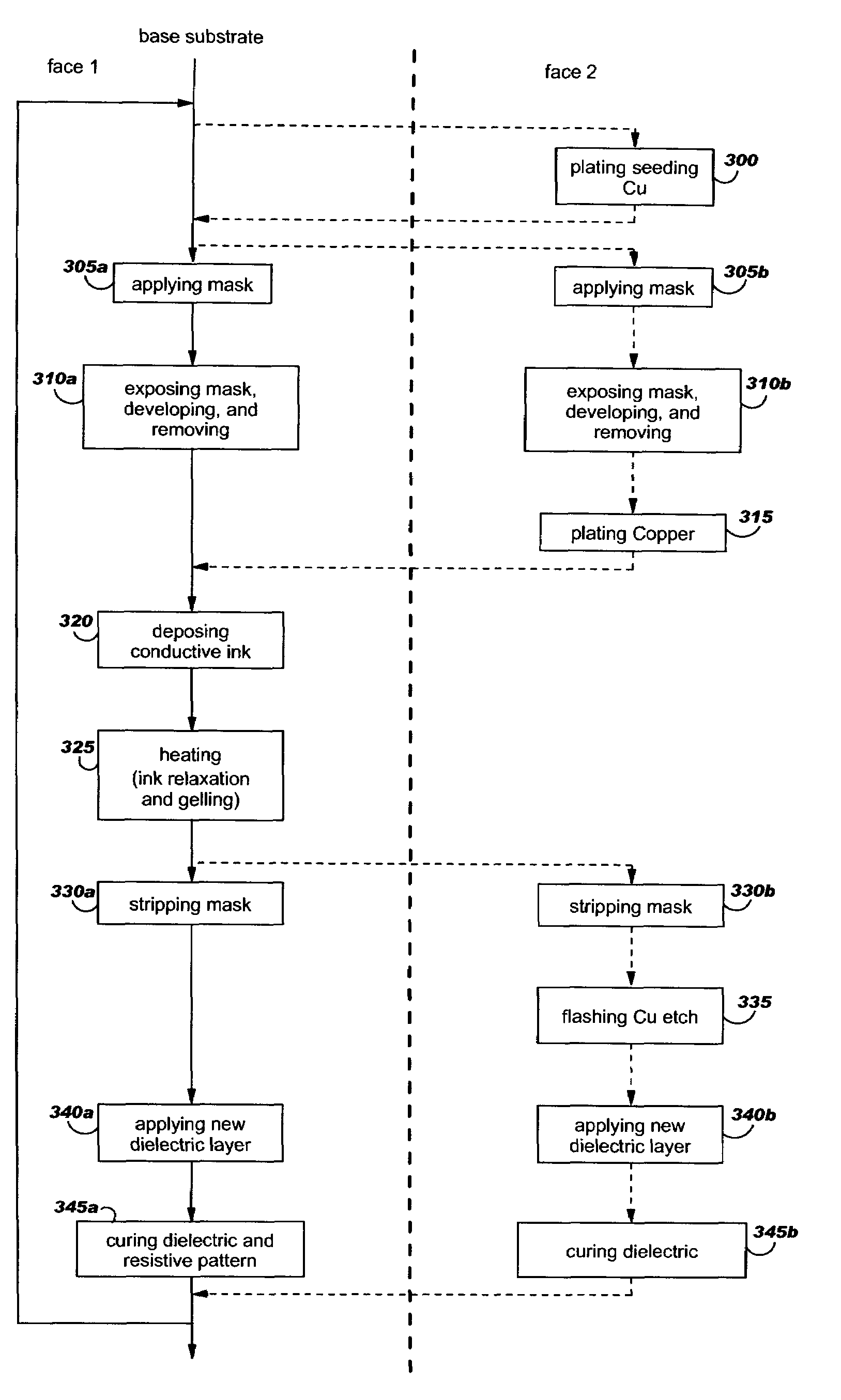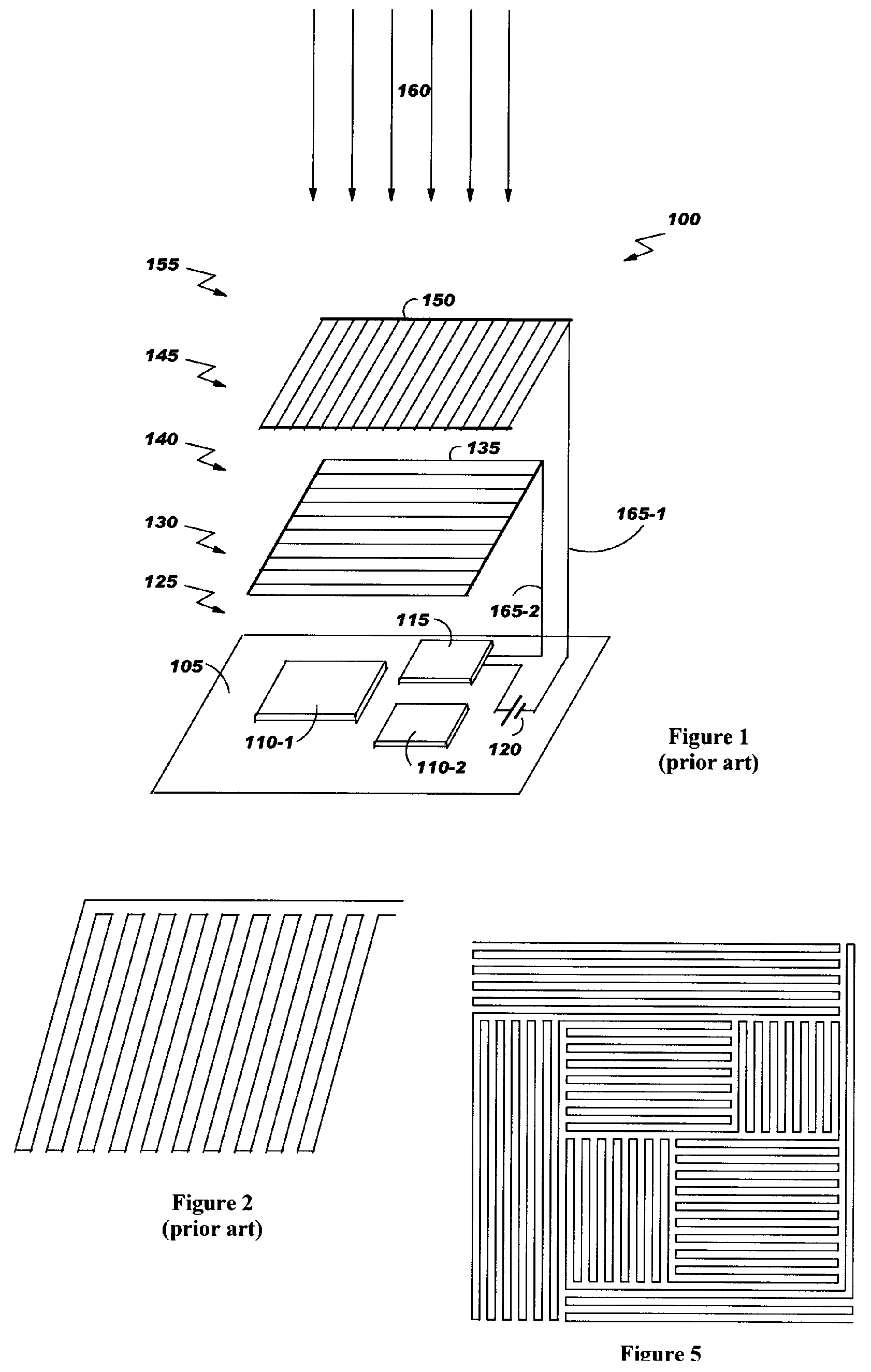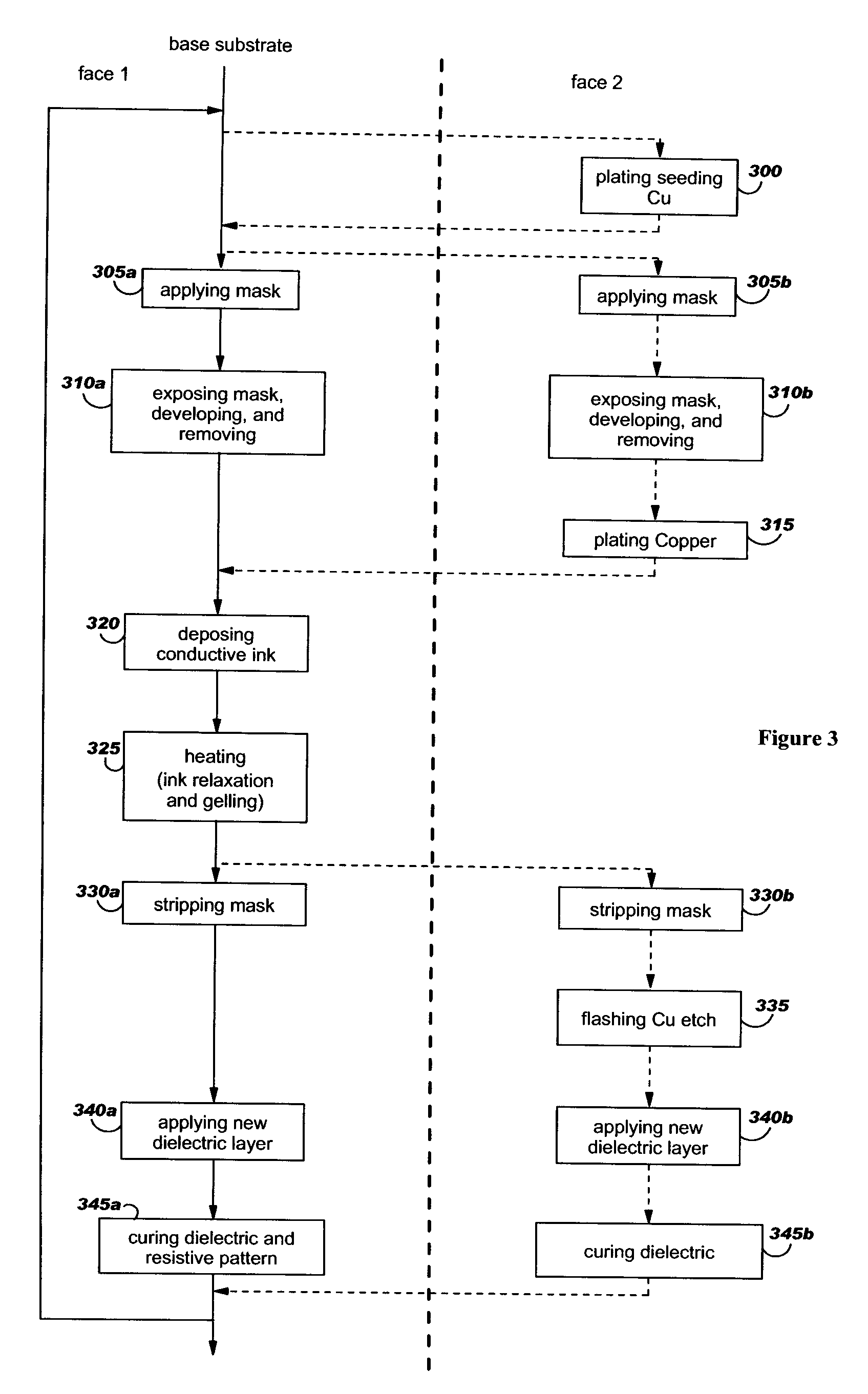Method of embedding tamper proof layers and discrete components into printed circuit board stack-up
a technology of discrete components and printed circuit boards, applied in the field of electronic packages, can solve the problems of difficult work, inability to detect a tamper attempt done with insulated tools, and high cost of tamper proof layers as described above, and achieves the effect of reducing production costs, reducing production costs, and reducing the number of tamper proof layers
- Summary
- Abstract
- Description
- Claims
- Application Information
AI Technical Summary
Benefits of technology
Problems solved by technology
Method used
Image
Examples
Embodiment Construction
[0042]According to the invention a conductive ink, preferably a conductive polymeric ink, is placed into a precise pattern embedded into the module laminate stack-up construction.
[0043]In a preferred embodiment the printed circuit substrate is built in respect of symmetry to control mechanical behaviors like induce warpage from differential PCB materials shrinkage (metal, glass, plastic) because these thermo-mechanical strains and deformations are exacerbated when a non symmetrical construction is used. This problem is true also for recent developed technologies where layers are added on a rigid core, that can be a multilayer substrate, made of classical stack up of woven glass cloths impregnated with resins and copper sheets etched with circuit patterns. The reinforced or non-reinforced cores and may include an epoxy, polyester, cyanate ester, bismaleimide triazine, polyphenylene ether, annylated polyphenylene ether, polynorborene, liquid crystal polymer (LCP), Teflon, polyimide or...
PUM
| Property | Measurement | Unit |
|---|---|---|
| viscosity | aaaaa | aaaaa |
| viscosity | aaaaa | aaaaa |
| viscosity | aaaaa | aaaaa |
Abstract
Description
Claims
Application Information
 Login to View More
Login to View More - R&D
- Intellectual Property
- Life Sciences
- Materials
- Tech Scout
- Unparalleled Data Quality
- Higher Quality Content
- 60% Fewer Hallucinations
Browse by: Latest US Patents, China's latest patents, Technical Efficacy Thesaurus, Application Domain, Technology Topic, Popular Technical Reports.
© 2025 PatSnap. All rights reserved.Legal|Privacy policy|Modern Slavery Act Transparency Statement|Sitemap|About US| Contact US: help@patsnap.com



